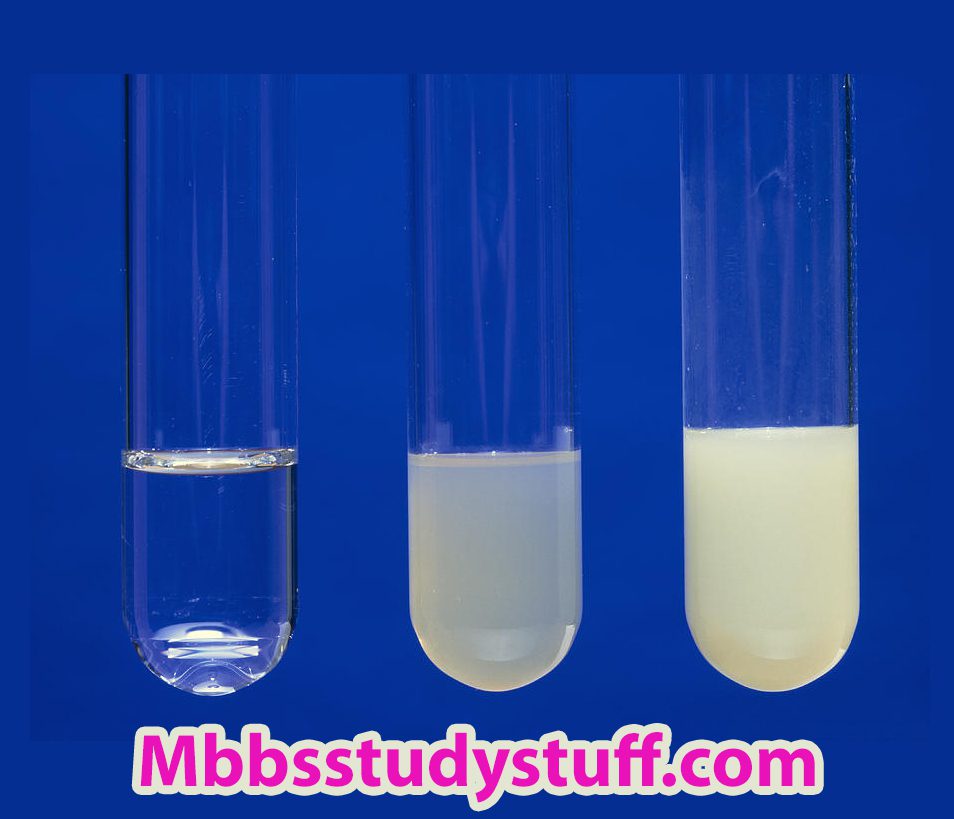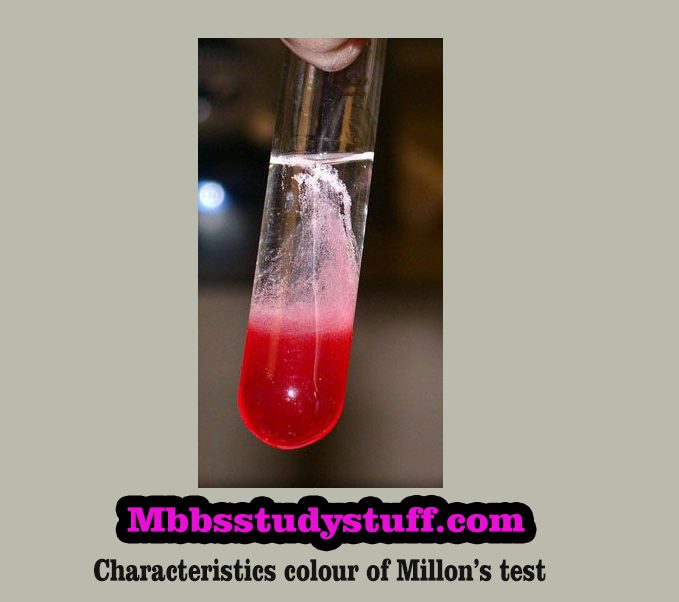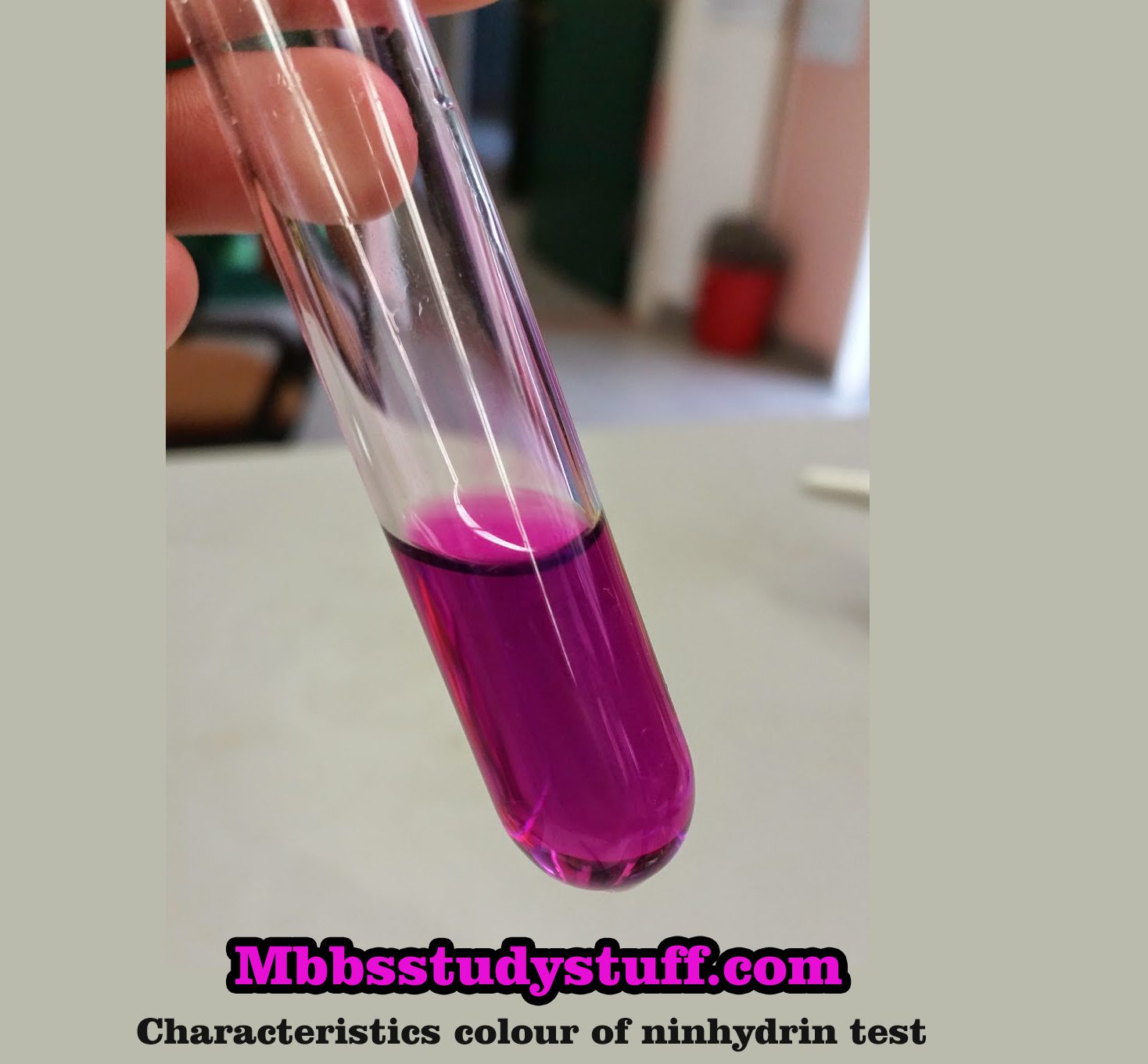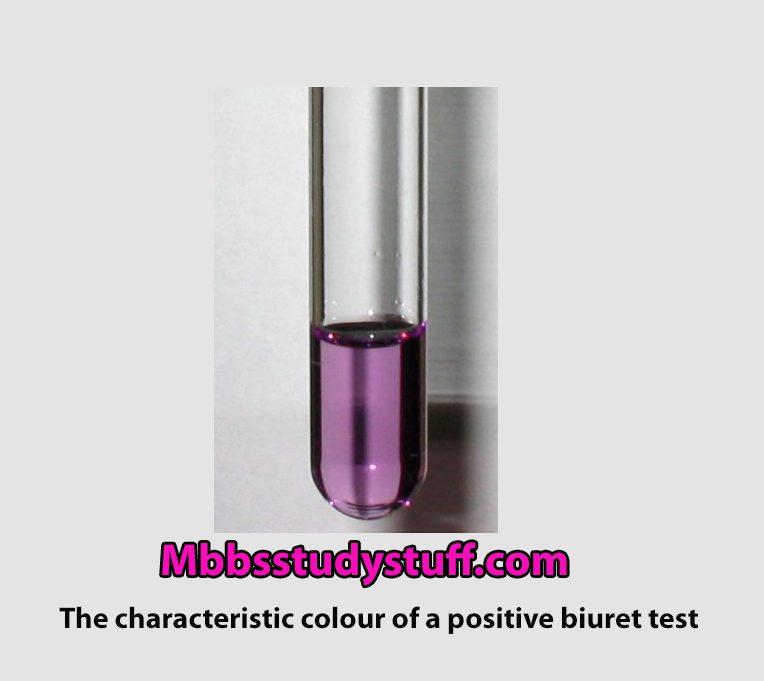Cysteine test for sulphur:
Significance:
Cysteine test for sulphur is used for the detection of sulphur containing amino acids.
Reagents:
- Sodium hydroxide (NaOH)
- Lead Acetate
Principle:
Protein or amino acids when heated with sodium hydroxide, sulphur splits out as sodium sulphide, which on reaction with lead acetate, forms grayish brown to black precipitate of lead sulphide (PbS).
Procedure:
- Take 1 ml of original solution (protein solution) in a test tube.
- Add 1 ml of 20% sodium hydroxide and 0.5ml of 2% lead acetate.
- A white precipitate is obtained due to denaturation of proteins.
- Now boil the mixture.
Observation:
- The white precipitate turns grayish brown or black indicating the presence of sulphur.
- A positive reaction is due to the presence of a sulphur containing amino acid in the protein. This can be cysteine or methionine
Precautions:
- Wash the apparatus before and after the experiment.
- Carefully handle chemicals while performing the test.








Leave a Reply